WHAT ARE VALVES AND HOW DO THEY WORK?
Valves are, at their most basic, devices that work to control, regulate, or direct the flow of something in a system or process.
They often have a number of features that help define how they should be used.
But there are probably stainless steel valves that can help you control flow or add safety to a system that pipes liquids, solids, gasses, or anything in between.
Valves provide several functions, including:
- Starting or stopping flow based on the valve state
- Regulating flow and pressure within a piping system
- Controlling the direction of flow within a piping system
- Throttling flow rates within a piping system
- Improving safety through relieving pressure or vacuum in a piping system
VALVE OPENING METHODS EXPLAINED
Even though many valves do similar things, the way they do them mechanically can be different.
How a valve opens and closes affects not only how well it works overall, but also how much control you have over the flow and how quickly the valve can work.
Most valves fit into one of three categories:
Multi-turn valves : These valves work like a screw or piston. You turn the handle, and the plug, plate, membrane, or other controlling object moves into the pipe’s path, blocking access. Depending on the valve, these can have higher or lower differentials that let you open or close them at different speeds.
Quarter-turn valves : A full range of motion can be achieved by turning the handle 90 degrees. This makes them great for situations where speed and ease of use are more important than accuracy.
In addition to the way a valve moves mechanically, you should also think about how it is actuated. Most valves fall into one of three categories:
Manual Valves : Most of the time, these valves are adjusted by hand. To open or close, they use handwheels, hand levels, gear wheels, or chains.
Actuated Valves: These valves are often connected to electric motors, air or pneumatic systems, hydraulic systems, or solenoids. They allow remote control and automation for applications that require high precision or a large scale.Automatic Valves: Some valves open when the flow meets a certain condition. For example, check valves close when there is backflow, and pressure release valves open when there is too much pressure.
COMMON VALVE TYPES AND THEIR APPLICATIONS
Valves have a variety of features, standards, and groupings that help you figure out what they are used for and how well they should work. One of the easiest ways to sort through the huge number of valves on the market and find the right one for a project or process is to look at how they are made.
Common types of valves include:
BALL VALVE
Most of these valves have quick-acting 90-degree turn handles, and they use a ball to control flow and make it easy to turn on and off. Operators generally agree that they are faster and easier to operate than gate valves.
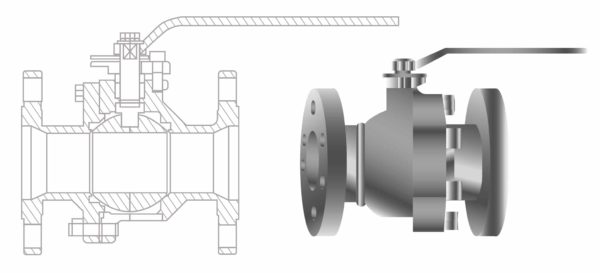
BUTTERFLY VALVE
The butterfly valve is a quick-acting rotary motion valve that is small and wafer-shaped, making it perfect for tight spaces. There are many different kinds of butterfly valve bodies.
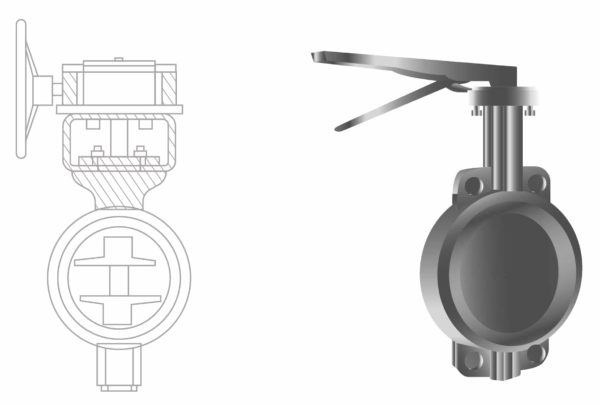
CHECK VALVE
These valves are used to stop backflow. They are usually self-opening, so when the flow goes in the right direction, the valve opens automatically and closes when the flow goes in the wrong direction.
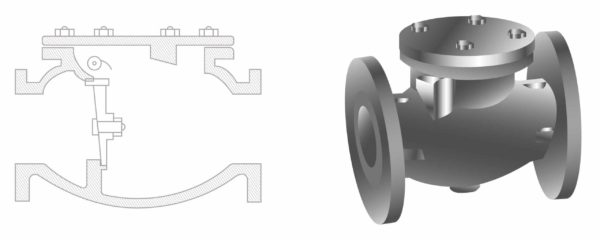
GATE VALVE
Gate valves are one of the most common types of valves. To start and stop the flow, they use linear motion. Most of the time, these are not used to control flow. Instead, they used it when the doors were fully open or closed.
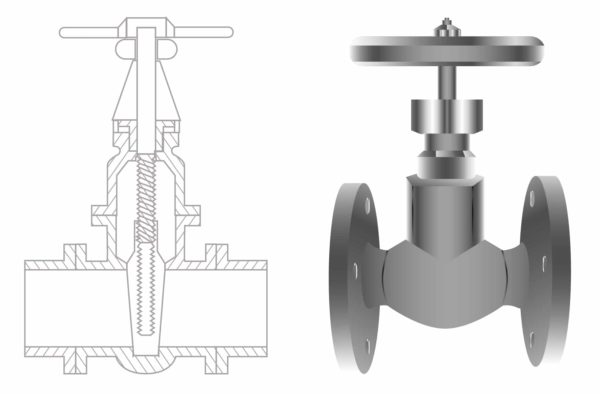
KNIFE GATE VALVE
The knife gate valve is usually used to control the flow of fluids that contain solids. It has a thin gate that is controlled by linear action and can cut through materials and make a seal.
Even though they aren’t good for high-pressure applications, these valves work well with grease, oils, paper pulp, slurry, wastewater, and other materials that might make it hard for other valves to work.
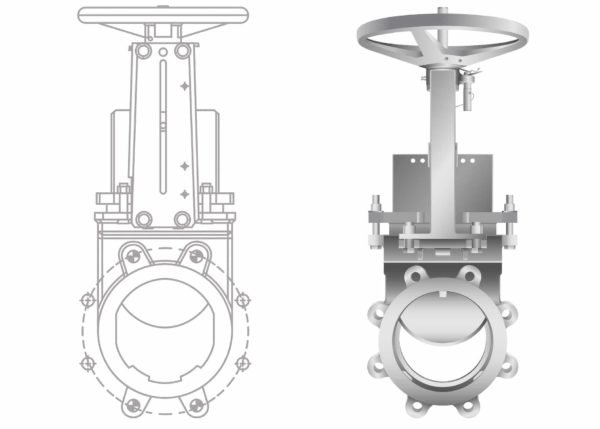
GLOBE VALVE
Globe valves are usually used in operations that involve modulating control. Usually comes in three body types: the T-body (shown above), the Y-pattern, and the angle body.
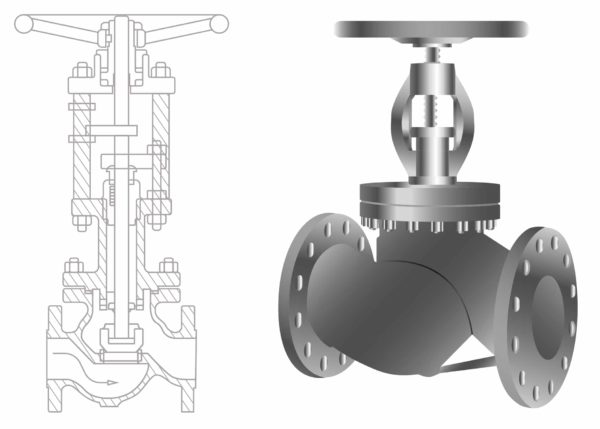
NEEDLE VALVE
Needle valves are usually used in small diameter piping systems where precise flow control is needed. Their name comes from the point on a conical disc used inside.
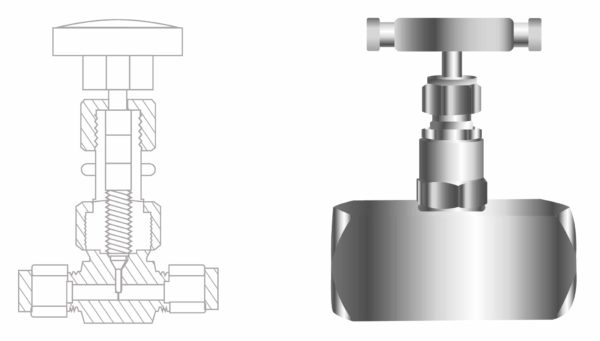
PINCH VALVE
Pinch valves use a linear motion and are often used to handle solids, slurries, and liquids with suspended solids. Most pinch valves have an internal sleeve to keep the media separate.
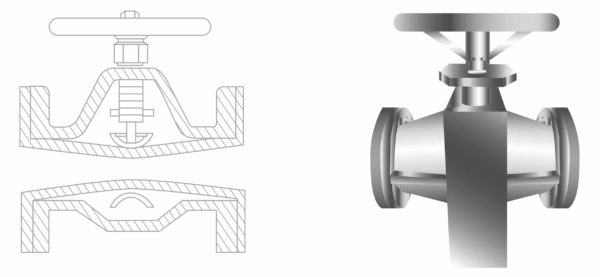
PLUG VALVE
Flow is controlled by these valves with the help of tapered or cylindrical plugs and a quick-acting quarter-turn valve handle. They have some of the best ratings when tight shutoff is important and are reliable in high-pressure or high-temperature environments.

PRESSURE RELIEF VALVE
These spring-operated valves are used to improve safety. When a system is over-pressured, they help bring it back to the desired pressure.
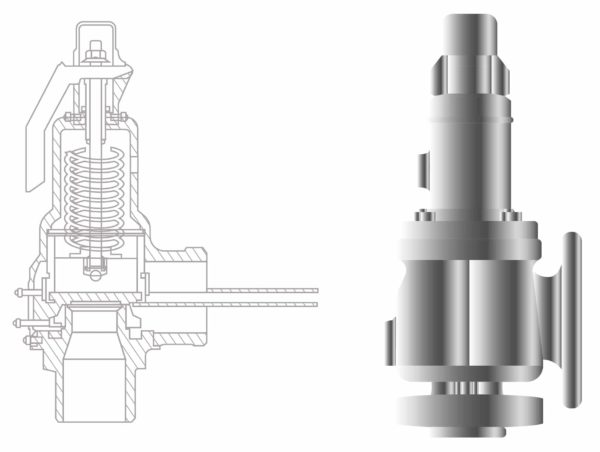
You might also see valves classified by function instead of design.
Some common functional names and the common design types that go with them are:
- Isolation Valves: Ball, butterfly, diaphragm, gate, pinch, piston, and plug valves
- Regulation Valves: Ball, butterfly, diaphragm, globe, needle, pinch, and plug valves
- Safety Relief Valves: Pressure release and vacuum relief valves
- Non-Return Valves: Swing check and lift check valves
Special Purpose Valves: Multi-port, float, foot, knife gate, and line blind valves
VALVE SIZING EXPLAINED: KEEPING THINGS FLOWING
Even though valves might take up a small amount of space in your piping process or system, they often take up a big chunk of your design and build budget. They also have a big effect on long-term costs and overall system performance.
Choosing the right valve size is important for minimising costs and making sure the system works in a safe, accurate, and reliable way.
The first thing to think about is the valve’s overall size, both in terms of its physical size and its internal size and flow rates (CV).
If you choose a valve that doesn’t fit well in the space you have, it could cost you more. If you choose a valve that doesn’t have the right flow rate, you may have trouble controlling the flow or, in the worst case, the whole system could fail.
For example, if your valve is too small, it could reduce the flow downstream while creating back-pressure upstream. If the valve is too big, you won’t be able to control the flow very well as you move away from fully open or fully closed.
When choosing the right size, make sure to take into account both the diameter of the connector and the flow rate of the valve as a whole. Some valves let a lot of flow through, while others stop flow and make the pressure go up.
This means that sometimes you have to install a bigger valve than the adapter diameter would suggest in order to control the flow.
VALVE END CONNECTIONS: THE KEY TO A GOOD FIT AND PROPER OPERATION
After size and design, it’s also important to think about how the valve ends connect.
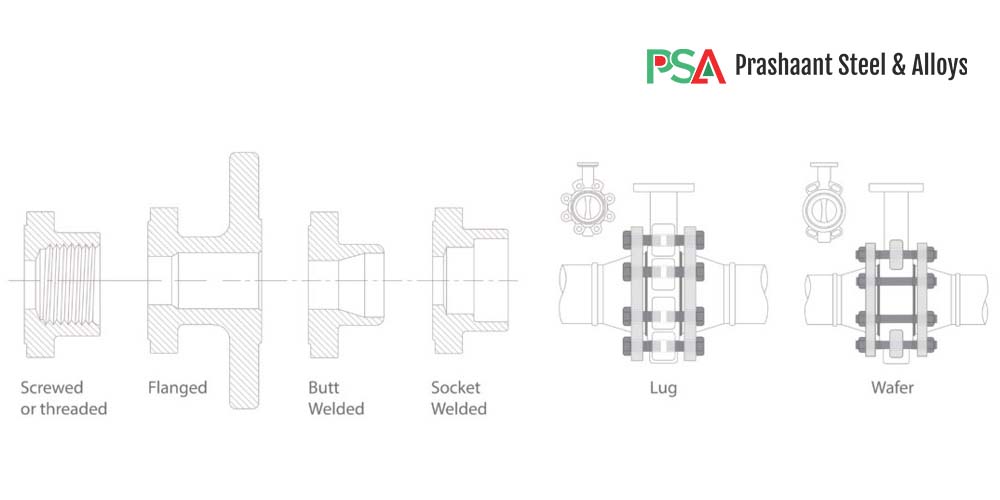
The most obvious thing this means is that you need to choose an end connection that works with your pipes. However, common end types also have different functions that might make one valve better for your needs than another.
Common valve connections and ends include:
- Screwed or threaded: These are often used to connect instruments or take samples.
- Flanged: This is the most common way to end a pipe.
- Butt-welded: Usually used in operations with high pressure or high temperatures
- Socket-welded: These are often used on small pipes where threaded connections are not allowed.
Wafer and Lug: These are often used for small valves in systems with limited space.
VALVE MATERIALS: ENSURING SAFETY AND LONG-LASTING PERFORMANCE
Depending on how you plan to use your valves, the materials they are made of could be a key part of making sure they work safely and keeping maintenance and replacement costs low over the life of your operation.
Stainless steel valves work well in a variety of processing environments, including those with corrosive media (like chemicals, saltwater, and acids), strict sanitation standards (like food and beverage manufacturing and pharmaceuticals), and high pressure or high temperature.
But if you are working with solvents, fuels, or volatile organic compounds (VOCs), it is often best to choose a valve made of a non-sparking material like brass, bronze, copper, or even plastic. In addition to choosing the right body material, the chemical compatibility of internal (wetted) trim parts should also be checked. If your valve has elastomers, you should also look at how well they work with chemicals and how much pressure and heat they can take.
VALVE STANDARDS: MEETING COMPLIANCE AND REGULATORY CONCERNS
Depending on how you plan to use the valves, they may need to meet certain standards to meet safety, sanitation, or other regulatory requirements.
Even though there are too many standard organizations and possible rules to cover in detail, some common general standard organizations are:
- CSA Group (CSA)
- The American Society of Mechanical Engineers (ASME)
- The American National Standards Institute (ANSI)
- The American Society for Testing Materials International (ASTM International)
- The Manufacturers Standardization Society (MSS)
- The International Organization for Standardization (ISO)
- The Public Health and Safety Organization (NSF)
- NACE International (NACE)
- The American Petroleum Institute (API)
- American Water Works Association (AWWA)
There are also standards for the industry to think about.
Major standards organizations by industry include:
- ASHRAE Valve Standards
- ASME BPVC Valve Standards
- ASSE Valve Standards
- ISA Valve Standards
- NFPA Valve Standards
- SAE Valve Standards

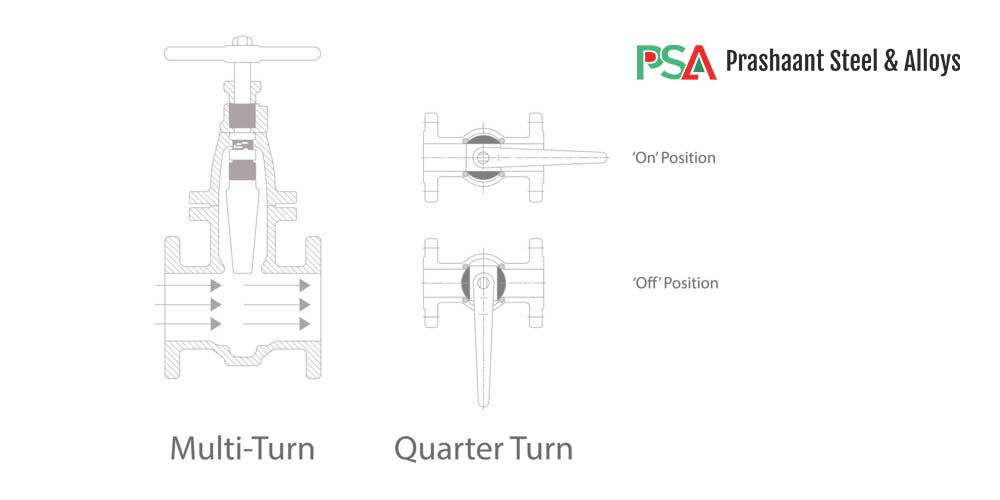
Recent Comments